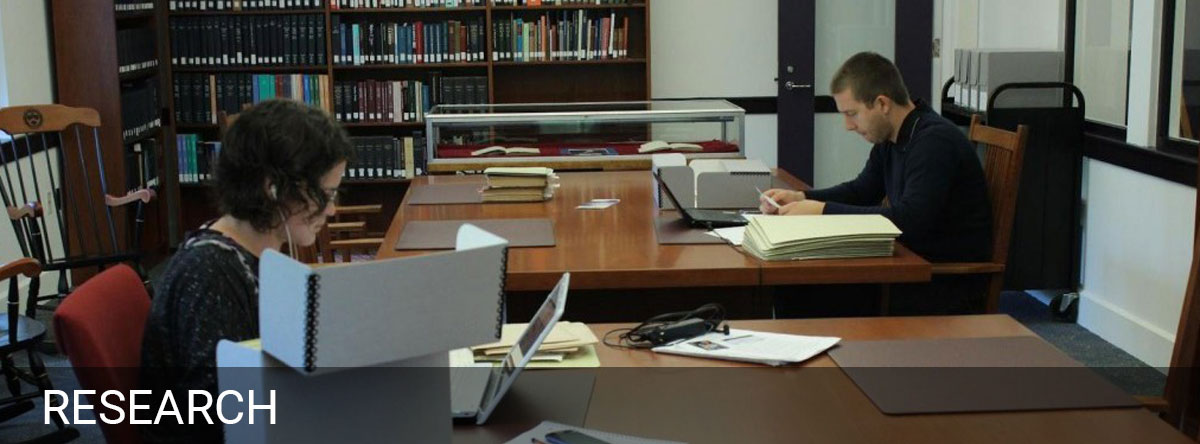 Paul T. Nimmo, Being in Action: The Theological Shape of Barth’s Ethical Vision (London: T & T Clark, 2007), ix + 202. $130.00
Paul T. Nimmo, Being in Action: The Theological Shape of Barth’s Ethical Vision (London: T & T Clark, 2007), ix + 202. $130.00
Reviewed by W. Travis McMaken (March 26, 2008)
Paul T. Nimmo – a lecturer and research assistant in the Faculty of Divinity at the University of Cambridge’s Corpus Christi College – makes a significant contribution to the literature surrounding Barth’s understanding of Christian ethics with the publication of this volume, which is based on his doctoral thesis completed under David Fergusson at the University of Edinburgh’s New College.Nimmo explicates “Barth’s engagement in Christian ethics” with reference to the “particular theological ontology” that Barth employs, one that is “actualistic” in character (1). Admitting that Barth never uses such language himself, Nimmo builds a case for such a reading, citing Eberhard Jüngel, John Webster, and George Hunsinger. This trajectory culminates for Nimmo in Bruce McCormack’s interpretation of Barth’s doctrine of election as “an act in the course of which God determines the very being of God,” concluding that “God is Lord over the very being and essence of God” (8). Just as God is understood as a ‘being in action,’ the human person as ethical agent is understood derivatively as a being in action (12). The ethical agent is constituted as such definitively in the election of Jesus Christ and actually in the event of obedience to and correspondence with the command of God.
Following the initial introductory chapter, Nimmo’s study is divided into three parts; Part One (chapters 2-4) dealing with the “noetic,” Part Two (chapters 5-7) the “ontic,” and Part Three (chapter 8) the “telic” aspects of Barth’s theological ethics understood in light of the concept of ‘being in action.’ Nimmo concludes with a brief assessment of Barth’s theological ethics in the ninth chapter. A bibliography, along with indices of subjects and names, fill-out the volume.
“The command of God attested by Scripture is at the heart of Barth’s moral ontology and his theological ethics” (17). Nimmo undertakes in the second chapter to explicate Barth’s understanding of that command in relation to Scripture. God’s command is, for Barth, an event which is not an abstract given but occurs in a personal manner. Such an event is both concrete and consistent; it “takes place within…the covenant relationship between God and humanity” (20). This context leads Nimmo to reflect on the recurrent theme of the relation between Law and Gospel in Barth’s thought. Nimmo rightly notes that Barth treats the Law only in relation to the Gospel, locating the Christian’s ethical imperative in the latter: “Precisely in the light of the Gospel…there exists a claim on the obedience of the ethical agent” (24). While we have every reason to suspect that God’s command upon us as it encounters us will be in continuity with the witness of Scripture, this witness does not restrict God’s command as it encounters us, nor does it remove the need for encounter. Instead, we “are called to hear afresh the command of God…through the historically specific command of God in the narrative of the Bible” (35).
What does this actualistic understanding of God’s command mean for the discipline of theological ethics? Nimmo addresses this question in his third chapter, examining the limits of theological ethics resultant from humanity’s creatureliness and sinfulness, as well as the nature of God’s command as concrete personal event. Proper theological ethics “is a question of the participation of the ethical agent in the righteousness of Jesus Christ, and therefore the extent to which her action glorifies the grace of Jesus Christ” (43). Central to this chapter is a discussion – in conversation with Nigel Biggar, William Werpehowski, and others – of Barth’s language of ‘formed reference.’ Barth situates “the vertical dimension of the command of God” and the “corresponding horizontal dimension” in the history of the covenant with its “focal point” – and thus theological ethics’ “starting point” (45) – in the “history of Jesus Christ” (46). The formed reference supplied by the covenant of grace functions as “encouragement” and “instructional preparation for the ethical event” (51), but is always limited by the “actualism of the command of God” (52). Nimmo concludes this chapter by discussing casuistry with reference to Barth’s theological ethics, again entering into conversation with other commentators. He notes Barth’s opinion that casuistry “represents the ethical agent’s wish to set herself on God’s throne in distinguishing between good and evil” (52), as well as its tendency to transform God’s command into an abstract system and thereby restrict Christian freedom.
Barth’s treatment of the practice of theological ethics’ is the topic of Nimmo’s fourth chapter. Here, the injunction “that the ethical agent focus on remaining radically open to the command of God and its ever-new demands and possibilities” (62) is central. Although this openness “must be constantly renewed” (63) and “is a matter of prayer,” Barth does not neglect “the past experience and knowledge and activity of the ethical agent” (64). Indeed, Nimmo suggests that Barth sees this history as
the formation of a creaturely habitus which builds upon past perseverance in the necessary openness of ethical encounter, in order to determine the best present practice of theological ethics and in anticipation of the further ethical reflection of the future. (65)
The church, in addition to Scripture, has an “important yet circumscribed” (68) role, possessing an actualistically conceived mediate and relative ethical authority by providing the context for ethical reflection. Indeed, the church is “an ethical agent” (72). After defending Barth’s practice of theological ethics from the charge that he fails to engage the empirical and that his conception of God’s command is ambiguous, Nimmo turns to criticisms of Barth’s ecclesiology. An important and beneficial aspect of Barth’s ecclesiology is that it “frees the Church to be the true Church,” that is, “to be truly human” and “to conceive of God as truly God” (81). Barth is confident that God acts within the church, but “the relationship in which obedience and moral formation are primarily located is the relationship between the ethical agent and the living God within the context of the Church and not the relationship between her and the church” (82-3).
Nimmo leaves behind the noetic for the ontic in the fifth chapter, addressing the question of theological anthropology. Barth’s “Christological derivation of theological anthropology results from the eternal election of God to be for humanity in Jesus Christ” (88), and thus the connection between humanity and God is not a necessary analogia entis but a free analogia relationis. There is “differentiation and relation” between the ethical agent and Jesus Christ, and the imago Dei is something to which we are “called to correspond” (91). Human existence is eccentric, with its center and basis in Jesus Christ (96); this does not mean, however that the ethical agent is not self-determining in a relative sense. Nimmo connects these aspects:
There is no question that the ethical agent can directly be the covenant-partner of God that Jesus Christ alone is: rather her destiny is to become a true covenant-partner of God, and this becoming depends directly on the Self-determination of God in Jesus Christ to be for her. Nevertheless, the question of the self-determination of the ethical agent remains one of responsibility, decision, obedience, and action. (97)
One must remember that the ethical agent is both creaturely and sinful, which means that only the “particular calling by the Word of God” (101) makes such becoming possible. Yet, there is “no trace of competition” between God and humanity because “the ethical agent remains under the divine determination” (104) despite sinfulness. This does not constitute a devaluation of creation because creation’s “significance and meaning…[is] found in its teleology, as the external basis of the covenant” (107).
Barth’s understanding of the relation between divine and human action is explicated in Nimmo’s sixth chapter. Before speaking of “derivative and relative” (111) human freedom, one must first understand that “it is only God who is free” (110). Human freedom exists properly in Jesus Christ, but the ethical agent is “awakened to freedom” by the Holy Spirit and exercises her freedom positively “when she corresponds to her own election by…electing God in faith” (113). Thus “freedom is not only a gift, but also a task” – it is “freedom from sin…bondage and death;” and “ for thankfulness, service and joy” (114). Nimmo spends much of this chapter explicating “the unity and the distinction” of divine and human action in Barth’s account of the concursus Dei, and in arguing that Barth’s treatment of baptism in Church Dogmatics IV/4 is a ‘case study’ for this relation.
Sanctification, understood as conformity to Jesus Christ, occupies the seventh chapter. “For the ethical agent to conform herself to Jesus Christ involves living within a circle of first receiving and then responding to divine grace,” which means that conformity is “correspondence in action” (137). This conformity is limited by human creatureliness and sinfulness, such that “the ethical agent has the ability to be a servant and instrument of God only as she receives that ability from God” (152). Still, conformity is real: “The objective reality of what has happened…in Jesus Christ is not without its effects in [the ethical agent’s] life as a being in action” (157). While Barth cannot countenance a habitus of grace, as if grace were a commodity, Nimmo takes his cue from George Hunsinger and argues that Barth does leave room for “a habitus of right practice – of openness and obedience to the command of God” (165).
In his eighth chapter, Nimmo leaves the ontic realm and gives attention to the telos of the ethical agent. The conformity discussed previously is now explored in terms of participation. In the event of grace, we participate indirectly in the knowledge of God in and through Jesus Christ; in our response to God’s command, we participate in Jesus Christ through active correspondence. This talk of participation should not be understood in terms of divinization; rather, it is a question “of the humanization of the ethical agent” (177). Conformity is not only participation, but “what remains” to both church and individual “is to witness before the world to the completion of God’s work in Jesus Christ” (180). Finally, insofar as conformity is participation and witness, it is also “glorification of God by the creature and glorification of the creature by God” (184).
The ninth and concluding chapter contains Nimmo’s assessment of Barth’s understanding of theological ethics. He identifies two chief strengths in Barth’s approach. First, Barth is acutely aware “of the living God and God’s relationship with the creatures of God” (187). This awareness is not naïve for it recognizes the creatureliness and sinfulness of the ethical agent. Second, Barth is acutely aware “of the being of humanity as co-humanity” (189). Church and Christian are for and not against the world because of the commission given by Jesus Christ, and thus the activity of the ethical agent with respect to the neighbor is of vital import. The first of these points is present throughout Nimmo’s volume; the second is somewhat less conspicuous.
There are many things to admire about Nimmo’s treatment. His is an expansive explication of Barth’s thought which, while centered in ethics, ties together the Church Dogmatics in a convincing and accessible way. Much of this has to do with the quality of Nimmo’s writing. The volume proceeds in an orderly manner, with clear sub-division headings and organized prose, and the argument is reinforced by concise introductions and summaries. This structure, which can occasionally feel a bit pedantic, makes the book easy to read. Nimmo’s engagement with secondary literature is concise, insightful, and never lacking in relevance for his argument. Nimmo’s main stylistic flaw is a tendency to rely heavily on quotations from Barth’s text, which unnecessarily clutter the footnotes.
If there is a potential weakness in Nimmo’s explication of Barth, it is his wholesale adoption of Bruce McCormack’s interpretation of the role of election with reference to God’s being. Nimmo’s assumption of Bruce McCormack’s historiography ought not to undermine his work in the eyes of those who would disagree with McCormack’s more recent unfolding of this interpretive position (especially with reference to the doctrine of the Trinity) for the fruit of this more recent development appears only seldom and obliquely in Nimmo’s text. Furthermore, it is not clear that a rejection of this would undermine the sort of actualism on which Nimmo relies.
The adoption of McCormack’s reading of Barth does, however, introduce certain emphases into Nimmo’s argument that, along with approaching Barth from the side of ethics, can mute other aspects of his thought. An instance of this can be found in Nimmo’s discussion of whether participation in Jesus Christ is best understood as communion or as correspondence:
It is clear that …prioritiz[ing] an understanding of participation as union over one of participation as correspondence…is not utterly devoid of support from Barth himself. However, it is to be wondered whether the actualistic ontology…of the Church Dogmatics genuinely allows this prioritization. (179)
The fundamental problem with Nimmo’s approach here is that he conceives of these two interpretations as mutually exclusive. Both aspects must be included in a full account of participation, however. Barth suggests as much when he writes that the fellowship between Christ and the Christian “would not be complete if their relationship were actualised only from above downwards and not also from below upwards, if it were not reciprocal” ( CD IV/3.2, 543). Identifying this downward vector with communion and the upward with correspondence suggests they are two sides of the same coin. Jesus Christ encounters the ethical agent in the power of the Holy Spirit, establishing a relationship of communion and supplying the freedom necessary for the ethical agent to respond with a corresponding act of obedience. Such a conception is consistent with Nimmo’s actualism, while more clearly recognizing the Spiritual dimension inherent in the event of command and response. Nimmo does not fail to note this aspect of the Holy Spirit’s work, but his frame of reference tends to marginalize it.
Such particular concerns notwithstanding, Nimmo’s volume is certainly a significant contribution to the study not only of Barth’s ethics but also of the overall shape of his thought. Being in Action provides an excellent introduction to Barth’s theological ethics and deserves a place on any syllabi or bibliography dealing with Karl Barth’s theology.
The views expressed here are strictly those of the author; they do not necessarily represent the views of the Center for Barth Studies or Princeton Theological Seminary.


